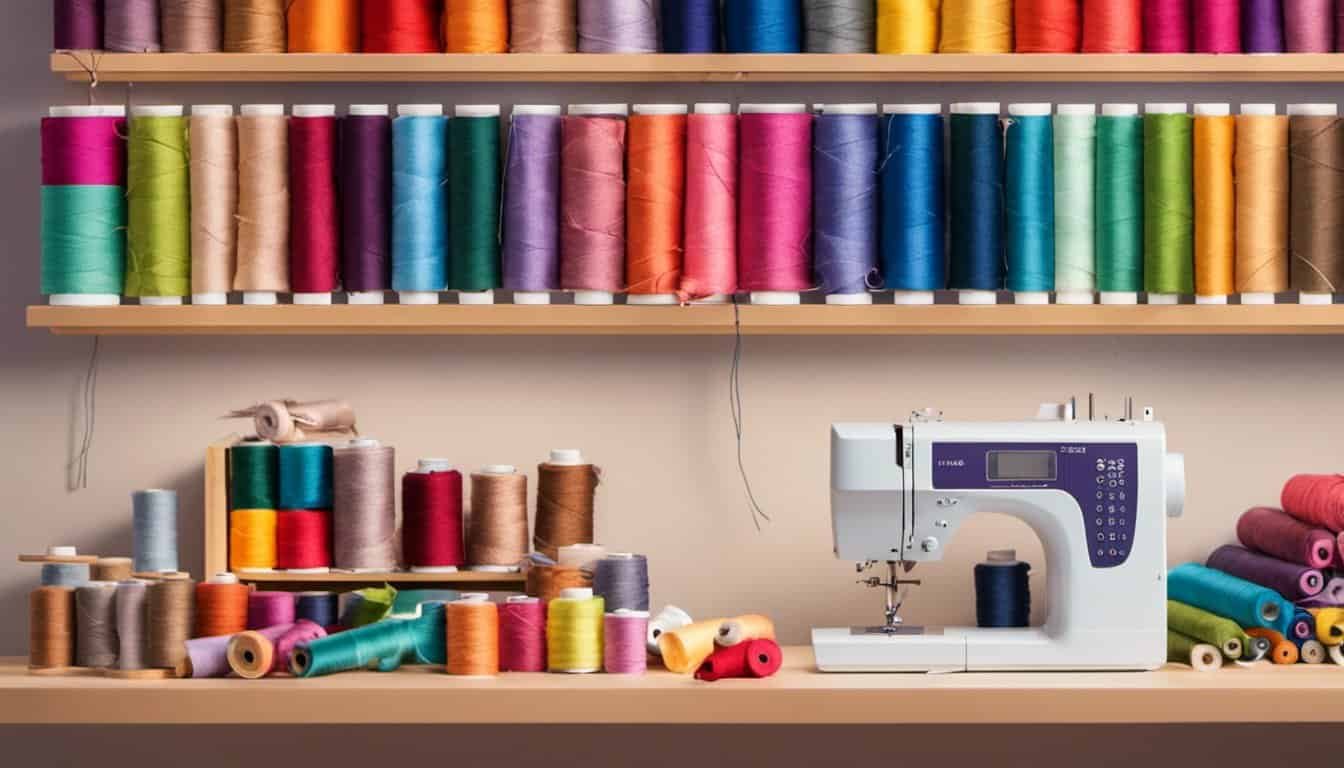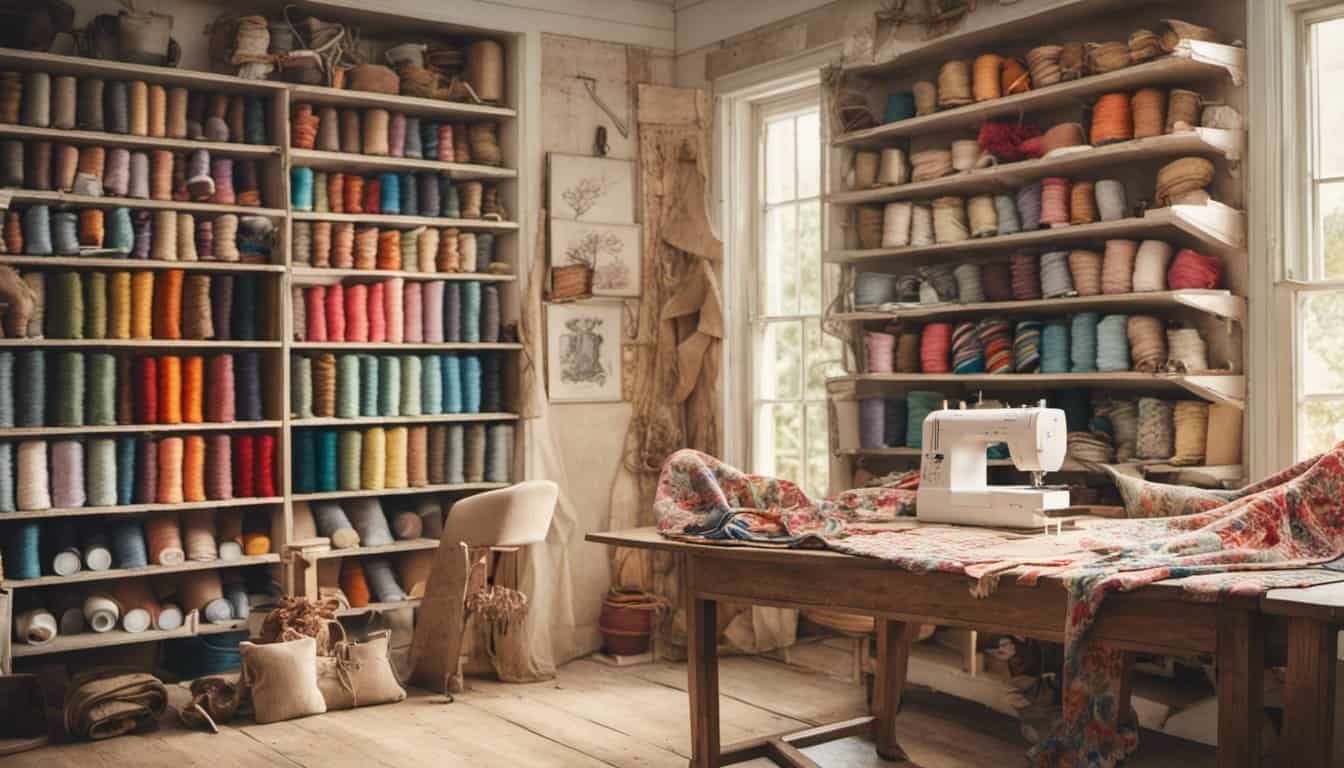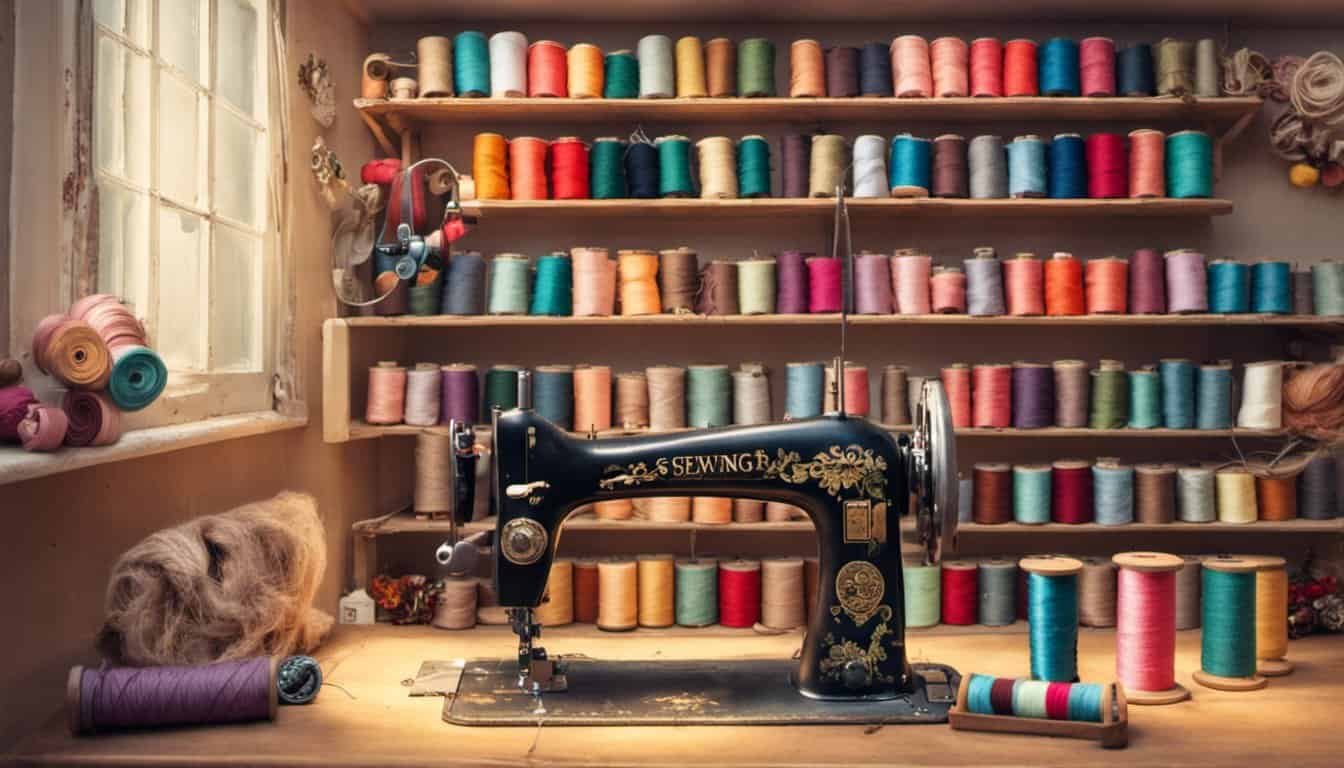Are you ready to unleash your creativity and dive into the world of sewing? Look no further than the Singer sewing machine! Whether you’re a beginner or an experienced seamstress, this versatile machine is perfect for all your sewing needs. In this article, we’ll guide you through the basics of getting started with your Singer sewing machine, so you can start stitching in no time. From setting up your machine to learning essential sewing techniques, we’ve got you covered. Let’s get started on your sewing journey!
When it comes to choosing a sewing machine, Singer is a brand that has stood the test of time. With its reputation for reliability and durability, a Singer sewing machine is an investment that will last for years to come. But where do you begin? Don’t worry, we’ve got you covered. In this article, we’ll walk you through the essential steps to get started with your Singer sewing machine. From threading the needle to selecting the right stitch, we’ll help you navigate the ins and outs of this versatile machine. So, grab your fabric and let’s get sewing!
Choosing the Right Singer Sewing Machine
When it comes to choosing the right Singer sewing machine, there are a few factors to consider. As an expert in all things sewing, embroidery, knitting, and crafts in general, I’ll guide you through the process of finding the perfect machine for your needs.
1. Determine your sewing needs:
Start by thinking about the type of projects you’ll be working on. Do you plan to sew garments, quilts, or home decor items? This will help you narrow down the features you need in a sewing machine. For example, if you’re into intricate designs or embroidery, you might want to consider a machine that offers built-in embroidery stitches or has an embroidery unit that can be attached.
2. Consider your skill level:
Are you a beginner or an experienced sewist? If you’re just starting out, it’s best to choose a sewing machine with basic features that are easy to understand and use. Look for models with automatic needle threading, easy stitch selection, and adjustable stitch length and width. As you gain more experience, you can always upgrade to a more advanced machine with additional features.
3. Set your budget:
Singer sewing machines come in a wide range of prices, so it’s important to set a budget before you start shopping. Determine how much you’re willing to spend and stick to it. Remember, a higher price doesn’t always mean better quality. Look for a machine that offers the features you need at a price point that fits your budget.
4. Do your research:
Before making a purchase, take the time to research different Singer sewing machine models. Read reviews, watch video tutorials, and compare the features and specifications of each model. This will help you make an informed decision and ensure that you find a machine that meets all of your requirements.
Understanding the Basic Parts of a Singer Sewing Machine
When you’re just getting started with your Singer sewing machine, it’s important to familiarize yourself with its basic parts. Understanding how each component functions will not only help you operate the machine effectively but also troubleshoot any issues that may arise.
Here are the key parts you need to know:
- Spool Pin: This is where you place the spool of thread to feed it into the machine.
- Bobbin Winder: Used to wind thread onto the bobbin, which is essential for creating the lower thread used in stitching.
- Tension Control: Adjusting the tension control ensures that the upper and lower threads are balanced for smooth and even stitching.
- Stitch Selector: Allows you to choose from a variety of stitches based on your project requirements.
- Needle: The needle is responsible for puncturing the fabric and creating the stitching. Ensure you choose the right needle based on the fabric you’re working with.
- Presser Foot: This part holds the fabric in place while you sew. Different presser feet are available for various sewing techniques.
- Feed Dogs: These are the teeth-like structures underneath the presser foot that move the fabric forward as you sew.
- Bobbin Case: Holds the bobbin and regulates the thread tension in the lower part of the stitch.
- Thread Cutter: A built-in blade or a notch used for cutting the thread after finishing a seam.
- Power Switch: Turns the machine on and off.
By understanding these basic parts of your Singer sewing machine, you’ll have a solid foundation to start your sewing journey. Remember to consult your machine’s manual for specific instructions related to your model.

Now that you’re familiar with the parts, the next step is to learn how to thread your Singer sewing machine. Stay tuned for our next section where we’ll guide you through this essential process.
Setting Up Your Singer Sewing Machine
Setting up your Singer sewing machine is the first step towards exploring the wonderful world of sewing, embroidery, knitting, and crafts. Don’t worry if you’re new to this – I’ll guide you through the process, and soon you’ll be stitching like a pro!
Unboxing and Assembly
When you unbox your brand new Singer sewing machine, you’ll find the main body, a foot pedal, power cord, and additional accessories. Assemble the machine by attaching the body to the base, ensuring it’s securely locked in place. Connect the foot pedal to the machine and plug in the power cord.
Threading the Machine
Threading your Singer sewing machine may seem daunting at first, but with a little practice, it will become second nature. Begin by placing a spool of thread on the spool pin and feeding the thread through the thread guide, tension control, and around the bobbin winder. Wind the thread around the bobbin, ensuring it’s evenly distributed, and place it in the bobbin case.
Next, guide the top thread through the thread guide, tension discs, and into the needle. Pull it out a few inches, and you’re ready to start sewing!
Adjusting the Settings
« Inspiring Success Story: How the Owners of Sewing Street Overcame Challenges to Create the Ultimate Crafting Haven
Discover the Amazing World of Sewing Machine Feet: Boost Your Sewing Projects with This Secret Weapon »
Before you start sewing, it’s important to adjust the settings according to your project. Select the desired stitch length and width using the stitch selector. Adjust the tension control to ensure that the stitches are balanced and neat. Beginners usually start with a straight stitch for basic projects.
Familiarize Yourself with the Controls
Take a moment to familiarize yourself with the different controls on your Singer sewing machine. Locate the power switch, which allows you to turn the machine on/off. You’ll also find the thread cutter, which makes trimming thread a breeze. Don’t forget to understand the functions of the presser foot, feed dogs, and needle position too.
Threading the Bobbin and Upper Thread
Threading the bobbin and upper thread on your Singer sewing machine is an essential step in getting started with your sewing projects. By correctly threading both the bobbin and upper thread, you’ll ensure smooth stitches and avoid any frustrating thread jams. Follow these steps to thread your machine like a pro:
- Prepare the Bobbin: Start by winding the bobbin. Place your thread spool on the spool pin, making sure it’s secure. Then, take the loose end of the thread and guide it through the bobbin winder tension disc. Wind the thread around the bobbin several times, ensuring it’s evenly distributed. Once you’re done, trim any excess thread.
- Insert the Bobbin: Locate the bobbin case on your Singer sewing machine. Open the bobbin case and insert the bobbin, making sure it rotates counterclockwise. Pull the thread through the groove in the bobbin case, leaving a few inches of thread free.
- Threading the Upper Thread: Now it’s time to thread the upper thread. Start by raising the presser foot and release the tension control to its highest position. Take your thread and pass it through the thread guide, then under and around the tension control, making sure it sits securely in the tension discs.
- Guide the Thread: From the tension discs, continue threading the upper thread by following the thread path indicated by the thread diagram on your Singer sewing machine. Pass the thread through the thread take-up lever, then down through the needle guide, and finally through the eye of the needle. Pull the thread gently to ensure it’s properly threaded.
Remember, each Singer sewing machine may have slight variations in threading, so it’s always a good idea to refer to your machine’s instruction manual for specific details. Once you’ve successfully threaded the bobbin and upper thread, you’re ready to start sewing! Don’t forget to adjust the stitch length and width according to your project’s requirements.
Threading the bobbin and upper thread is just one of the first steps in your sewing journey. As you become more comfortable with your Singer sewing machine, you’ll learn more techniques and tricks to enhance your sewing skills. So, keep practicing, and soon you’ll be creating beautiful garments and projects with ease.

Familiarizing Yourself with the Stitch Options
Once you have successfully set up and threaded your Singer sewing machine, it’s time to dive into the exciting world of stitch options. Singer sewing machines come with a variety of stitch patterns that you can choose from, allowing you to get creative and customize your sewing projects. Here are some tips to help you familiarize yourself with the stitch options on your machine:
- Refer to the Instruction Manual: Every Singer sewing machine model has its own unique set of stitch options and controls. To make the most of your machine’s features, it’s essential to consult the instruction manual provided by Singer. The manual will guide you through the different stitches available on your machine and explain how to select and adjust them.
- Experiment with Basic Stitches: Begin by practicing with the basic stitches on your machine, such as straight stitch, zigzag stitch, and reverse stitch. These stitches are versatile and can be used for a wide range of sewing projects. Get comfortable with adjusting the stitch length and width settings to achieve your desired results.
- Explore Decorative Stitches: Once you feel confident with the basic stitches, it’s time to explore the decorative stitch options on your machine. Singer sewing machines offer a plethora of decorative stitches, including scallop stitch, satin stitch, and appliqué stitches. These stitches can add a unique touch to your garments, quilts, and other sewing projects.
- Try Different Stitch Applications: Experiment with different stitch applications to expand your sewing skills. For example, try using a stretch stitch for sewing knit fabrics, a blind hem stitch for creating invisible hems, or a buttonhole stitch for adding buttons to your garments. Each stitch has its own purpose and can enhance the quality and appearance of your creations.
- Practice and Play: Don’t be afraid to experiment and play around with the stitch options on your Singer sewing machine. The more you practice and explore, the more confident you’ll become in using different stitches for various sewing projects. Enjoy the process of learning and let your creativity soar.
Adjusting the Tension and Stitch Length
One important aspect of using your Singer sewing machine effectively is adjusting the tension and stitch length. These settings can make a significant difference in the quality of your stitches and the overall appearance of your sewing projects. Don’t worry, though – it’s not as complicated as it might seem. Let’s dive in!
Tension Control
The tension control on your Singer sewing machine determines how tight or loose your stitches will be. It ensures that the upper and lower threads are balanced, resulting in even and professional-looking stitches. Most machines have a numbered dial or a digital display to adjust the tension.
Here’s what you need to do:
- Start by setting the tension dial to the default or recommended setting for the fabric you’re working with. You can find this information in your machine’s manual or online.
- Sew a test swatch on a scrap piece of fabric. Check the top and bottom of the fabric to see if the tension is balanced. If the stitches appear loose or puckered, you’ll need to adjust the tension accordingly.
- If the stitches are loose or loopy, increase the tension by turning the dial one increment at a time. If the stitches are too tight and the fabric is pulling, decrease the tension in the same way.
Remember to make small adjustments and re-test after each change until you achieve the desired stitch quality.

Stitch Length
Another feature you can adjust on your Singer sewing machine is the stitch length. The stitch length determines how close together or far apart your stitches will be. It can affect the strength and appearance of your seams, as well as the overall drape of your fabric.
To adjust the stitch length:
- Locate the stitch length dial or button on your machine. It’s usually located near the stitch selector.
- Experiment with different stitch lengths on a scrap fabric. Start with the default setting for your intended project and adjust as needed.
- For standard seams, shorter stitch lengths (around 2.0 – 2.5 mm) work well. Longer stitch lengths (3.0 – 3.5 mm) are ideal for basting or gathering stitches.
Remember, each fabric and project may require different tension and stitch length settings. Take the time to practice on scraps and make adjustments to achieve optimal results.
Now that you’ve learned how to adjust the tension and stitch length, you’re well on your way to becoming a sewing pro! Keep practicing and experimenting
Tips for Sewing with a Singer Sewing Machine
Sewing with a Singer sewing machine can be an enjoyable and rewarding experience. Whether you are a beginner or have some sewing experience, here are some helpful tips to get started:

1. Familiarize Yourself with the Machine: Before you start sewing, take some time to become acquainted with your Singer sewing machine. Read the instruction manual to understand the different features, functions, and settings. This will help you navigate the machine more confidently.
2. Practice Threading: Properly threading your Singer machine is crucial for smooth stitches and preventing thread jams. Follow the step-by-step instructions in the manual to correctly thread the upper thread and wind the bobbin. Take your time to practice this process until you feel comfortable.
3. Experiment with Stitches: Singer sewing machines offer a variety of stitch options. Start by experimenting with basic stitches to get a feel for how they look and their functionality. As you become more comfortable, explore the decorative stitches and try different stitch applications, such as sewing a buttonhole or creating decorative edges.
4. Adjust the Tension: Adjusting the tension control on your Singer machine is essential for achieving balanced stitches. Use scrap fabric to test different tension settings until you find the tension that gives you the desired results. Remember to refer to your manual for specific instructions on adjusting the tension for your model.
5. Play with Stitch Length: The stitch length determines how closely or widely spaced your stitches are. Adjusting the stitch length can give your projects a different look and feel. Practice sewing with different stitch lengths to see how it affects the outcome and experiment with various stitch applications.

Troubleshooting Common Issues
Sewing machines are incredible tools that can bring your creative visions to life. However, like any machine, they can sometimes encounter issues. Don’t worry if you run into a problem with your Singer sewing machine; troubleshooting common issues can be easier than you think. Here are some tips to help you overcome those hiccups along the way:
Uneven Stitches
If you notice that your stitches are coming out uneven, it could be due to incorrect tension settings. The tension regulates the tightness of the stitches, and different fabrics may require different tension adjustments. Try adjusting the tension dial on your machine; turning it to a lower number will loosen the tension, while turning it to a higher number will tighten it. Experiment with different tension settings until you achieve smooth and even stitches.
Broken or Skipped Stitches
Dealing with broken or skipped stitches can be frustrating, but there are a few things you can try to fix the issue. First, make sure you are using the correct needle size for your fabric. Using a needle that is too small or too large can result in broken or skipped stitches. Additionally, check the needle for any signs of damage or dullness and replace it if necessary. Lastly, ensure that you are using the correct type of thread for the fabric you are sewing. Using a stronger, thicker thread may help prevent breakage or skipped stitches.
Jammed Bobbin
If your bobbin gets jammed, the first step is to unplug your machine to avoid any accidents. Then, remove the bobbin case and any tangled threads. Check for any debris or lint that may be causing the jam. Give the area a good cleaning and make sure the bobbin is correctly positioned in the case. Once everything is clear, reassemble the bobbin case and test your machine to see if the issue is resolved.
Remember, troubleshooting sewing machine issues is a part of the learning process. Don’t get discouraged if you encounter a problem – take a deep breath, follow these troubleshooting tips, and keep practicing. With a little bit of patience and perseverance, you’ll be back to creating beautiful stitches in no time!

Conclusion
Now that you have read this article, you are equipped with valuable tips to get started with your Singer sewing machine. Remember to take the time to familiarize yourself with the machine and its functions. Practice threading the machine to ensure smooth and even stitches. Don’t be afraid to experiment with different stitch settings and tension adjustments to achieve the desired results. And most importantly, be patient and persistent in your sewing journey.
By following these tips, you will be well on your way to creating beautiful and professional-looking garments and projects with your Singer sewing machine. Don’t forget to consult the instruction manual whenever you have questions or encounter any issues. With practice and experience, you will become more confident and skilled in using your sewing machine.
So, go ahead and start sewing! Enjoy the process and let your creativity shine through. Happy stitching!

















